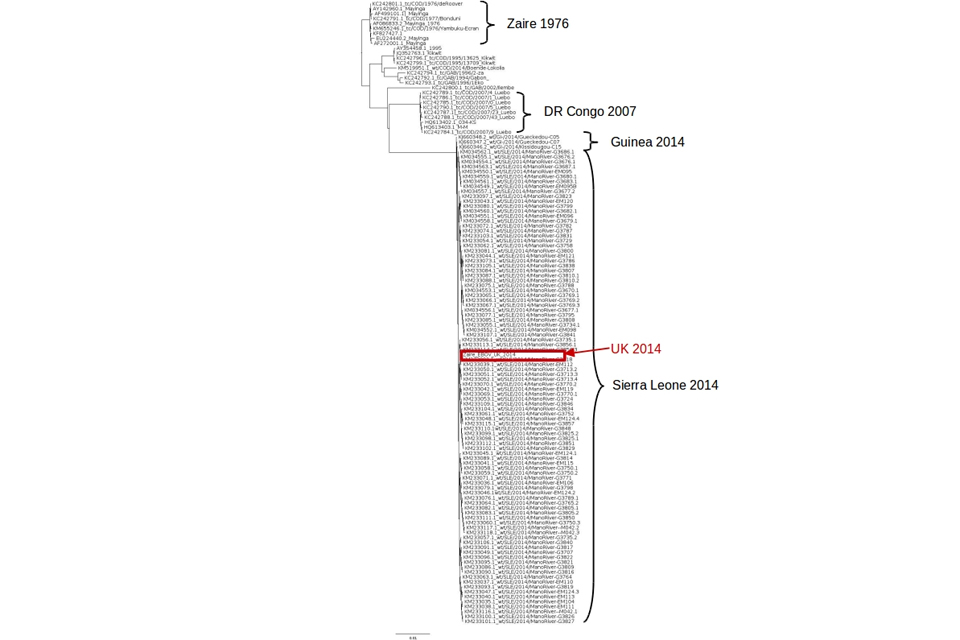Ebola virus sequence: genetic sequence information for scientists
Published 7 November 2014
1. Genetic sequence information for scientists: UK1 Ebolavirus sequence
This report details preliminary genome analysis of the first case of EBOV treated in the UK. The patient was exposed to EBOV in Sierra Leone and was treated under quarantine at a London Hospital. EBOV genome sequence was derived from 2 sources, directly from a clinical sample and from the first passage of an EBOV cell culture, initiated with the patient sample.
Samples were extracted using QIAamp Viral RNA mini kit (Qiagen). Viral amplification and sequencing was performed using Ovation RNA-Seq System V2 (NuGen) which utilises Single Primer linear Isothermal Amplification (SPIA), as previously described (Malboeuf et al 2012 and Gire et al 2014). Sequencing libraries were generated using the Nextera XT library kit (Illumina) following the standard protocol for amplicons smaller than 500bp and with a total input of 1.5 ng of starting material. Normalised libraries were subsequently sequenced on the MiSeq platform using the v2 300 cycle reagent kit.
The sequence data generated was trimmed and uploaded onto a local Galaxy server. The pair reads were mapped to a reference genome (KM233114.1) using BWA 0.7.5 and the consensus called using QuasiBam. There were no nucleotide differences observed between the sequence derived from clinical material and tissue culture.
The sequence has been submitted to GenBank, but a draft sequence file is available.
A phylogenetic analysis of the UK derived EBOV genome and 125 Zaire ebolavirus genomes available from GenBank, was performed using a heuristic maximum likelihood tool (FastTree). This analysis showed that the UK sample clustered within the 99 genomes from Sierra Leone (Gire 2014) and that sequences from the 2014 West African epidemic, including three genomes from Guinea, form a clade that is genetically distinct from the historical outbreaks of Zaire ebolavirus. The UK derived genome differs from the closest Sierra Leone genome (KM233114.1) by 2 nucleotides.
Figure 1 – Phylogenetic tree larger image attachment available

